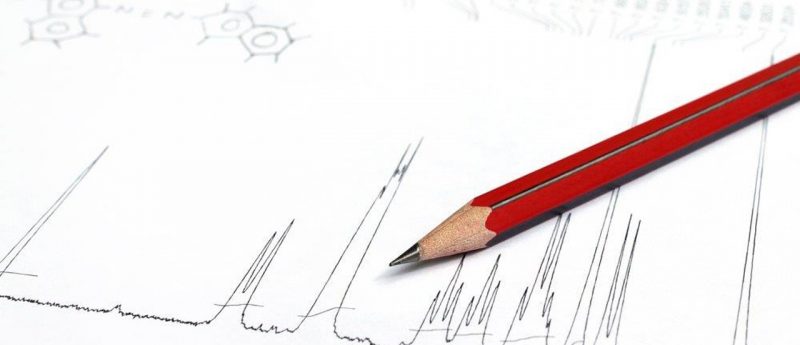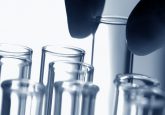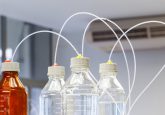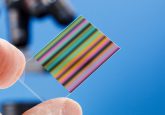HILIC, aptly rounding off ‘hydrophilic’

In this column from Robert MacNeill (Pharmaron; PA, USA), he discusses hydrophilic-interaction chromatography (HILIC) – the new column chemistry and format options, detailing how potent the technology is especially for biologics.
 Robert MacNeill received his Bachelor’s degree with Honors in Chemistry from Heriot Watt University and then his MSc in Analytical Chemistry from the University of Huddersfield, both in the United Kingdom. Robert is also a Chartered Chemist and a Fellow of the Royal Society of Chemistry. With 20 years of experience in all aspects of quantitative bioanalytical LC–MS/MS method development, 11 of these years heading method development activities within HLS/Covance, and a regular author and peer reviewer for the journal Bioanalysis, Robert is a recognized expert and innovator in the field.
Robert MacNeill received his Bachelor’s degree with Honors in Chemistry from Heriot Watt University and then his MSc in Analytical Chemistry from the University of Huddersfield, both in the United Kingdom. Robert is also a Chartered Chemist and a Fellow of the Royal Society of Chemistry. With 20 years of experience in all aspects of quantitative bioanalytical LC–MS/MS method development, 11 of these years heading method development activities within HLS/Covance, and a regular author and peer reviewer for the journal Bioanalysis, Robert is a recognized expert and innovator in the field.
In his current role, Robert coordinates all LC–MS/MS method development and associated training, takes the lead in keeping abreast of innovation and technological development in the industry, leads in-house research projects and performs technical writing for the purpose of producing publications.
Peptides, amino acids, mRNA and larger biologic entities…I have seen a lot of these analytically fascinating beasts coming into play in the modestly vaunted hydrophilic-interaction chromatography (HILIC) dominion over the last few months. New HILIC column chemistry and format options from prominent vendors have been noted too. It comes as little surprise, having personally been fortunate enough to be able to realize how potent the technology is over the past couple of decades, and especially for biologics. By especially, I mean at least as an intuitive and prominent theoretical option, now accumulating a decent substantiation in the literature too. That is all because of the innate polarity of so many biologics being aligned with the very polarity that the likes of HILIC feeds, indeed devours from, and makes great HILIC retention and eventually, with a little tweaking and fine-tuning, overall great chromatography become manifest.
Yes, I have written about HILIC before, but it needs and deserves more exposure, and I am glad if it is really shifting out of a niche domain. Many moons ago, especially if you can squint to see the moon as a gigantic spherical silica-based particle, I almost unwittingly started down the broader niche path, if you will, in separation science. Never mind the analytical chromatography side of things, this initial foray was in solid-phase extraction (SPE). The sorbent screening and subsequent optimization in this, my very first SPE bioanalytical method development, resulted in a path forward embedded in what turned out to be per aqueous retention on bare silica, forging better recovery than a ream of different bonded phases. This is a story in itself, and actually pivots on reversed-phase, in contrast to the main theme of this editorial, reflecting that versatility linked to the silica base. At least in roaming through the lesser-explored niche realm, the interest factor is an ever-present companion, the element of challenge and prospect for innovation tantalizingly close at hand.
By no means is HILIC the only option in the guise of normal phase with water miscible solvents, either. There are columns available presenting a silica hydride surface and a number of fascinating and useful flavors of bonded phase, and presenting us with the reality of the simultaneous manifestation of reversed-phase and normal phase dynamic processes. As such, this is something that would be particularly useful if transferred to the SPE format, where initial catchment is so often a challenge, especially for biologics. However, there is now HILIC established anyway in the SPE context. ‘Hydrophilic-phase extraction’ (HPE), it came to be known, after seeing it bring great results for oligonucleotides, after a brief dalliance in 2016 with a peptidic application, which was similar in many ways, laying the foundation for further work in HPE. There’s plenty of interest ahead in this polar predicament, which also gives wonderfully clean extracts. It features a wash regime involving both low pH and high pH, moving from high-organic to low-organic, and no need for an aqueous equilibration either, at least in the latest oligonucleotide-focused manifestation. Indeed, such a step would induce breakthrough upon the sample load. Altogether it’s a part of the collective charge, even charge state envelope, one might say, toward high-recovery hence high-sensitivity biologic methodologies.
As mentioned, silica has a strong propensity for supporting various retention mechanisms. HILIC is just one of several modes possible, so we can think of it as poised and ready, just waiting to enter the fray. In actual fact, you can see HILIC behavior on almost any silica-based column, even with hydrophobic bonded phases, if the mobile phase composition is favorably high-acetonitrile and we perhaps push a little harder to get there. It’s just not really reproducible under extenuating circumstances, mainly when a pronouncedly lipophilic character within the bonded phase is disruptive to the integrity of the characteristic water-rich layer around the particles. I would therefore keep the phase polar, unless working on unmodified silica.
Rounding off this polar prattle, biologics with all their bioanalytical nuances and quirks are here to stay, and we are seeing techniques like HILIC easily slip arm-in-arm with the quantitative side of the playing field. They are broadly hydrophilic, and HILIC is intuitively a part of that, with no need for curious additives to get the chromatographic pot bubbling. Favorable retention for anything polar and multi-charged, simplified charge state distributions, and in rather a new chapter, movements to the promised sensitivity-bequeathed domain of microflow and nanoflow have already begun!
Disclaimer: the opinions expressed are solely my own and do not express the views or opinions of my employer, Bioanalysis Zone or Taylor & Francis Group .






